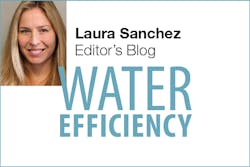In the wake of Hurricane Harvey, Houston residents are concerned about contaminants in the lingering floodwaters, and rightly so—the composition of the aqueous mélange is largely unknown.
Both government officials and academics are currently working to determine the specific contaminants and concentrations that the storm’s extreme winds and rains stirred up. With extensive laboratory testing, they will measure levels of E. coli bacteria, fecal coliform, organic compounds, pesticides, toxic heavy metals, and other potentially toxic pollutants that have leached from septic tanks and nearby Superfund sites.
They are challenged, however, to collect enough samples from disparate areas to draw significant conclusions. Thus far, researchers conducting independent water sampling have discovered high levels of E. coli bacteria. In some areas, they found concentrations to be more than 100 times the rate of EPA’s allowable level—a circumstance that they explain is common in post-flood conditions.
This testing is critical as a means of evaluating the potential impact to area residents. A reported 168 Texas water systems are impacted by the floodwaters and remain under boil advisories. 50 are shut down completely, according to the Texas Commission on Environmental Quality.
Meanwhile, the US Coast Guard and EPA are currently working with Texas state officials to clean up oil and chemicals spilled from a dozen industrial facilities. To be on the safe side, public health officials are encouraging property owners to consider their private wells to be contaminated until proven otherwise with thorough testing.
As the Texas Tribune reported, “Low-income and minority communities could be particularly impacted. An analysis by the Center for Biological Diversity released last week found that nine of 16 flooded Superfund sites are in neighborhoods where a majority of residents are minority or of low income.”
“We’re trying to get a good picture of what’s in the water,” said Latrice Babin, the deputy director of pollution control for Harris County. But she explained that the agency’s 10 water samplers are struggling to complete testing of industrial sites and wastewater treatment facilities.
What suggestions do you have for a systematic water evaluation plan?
